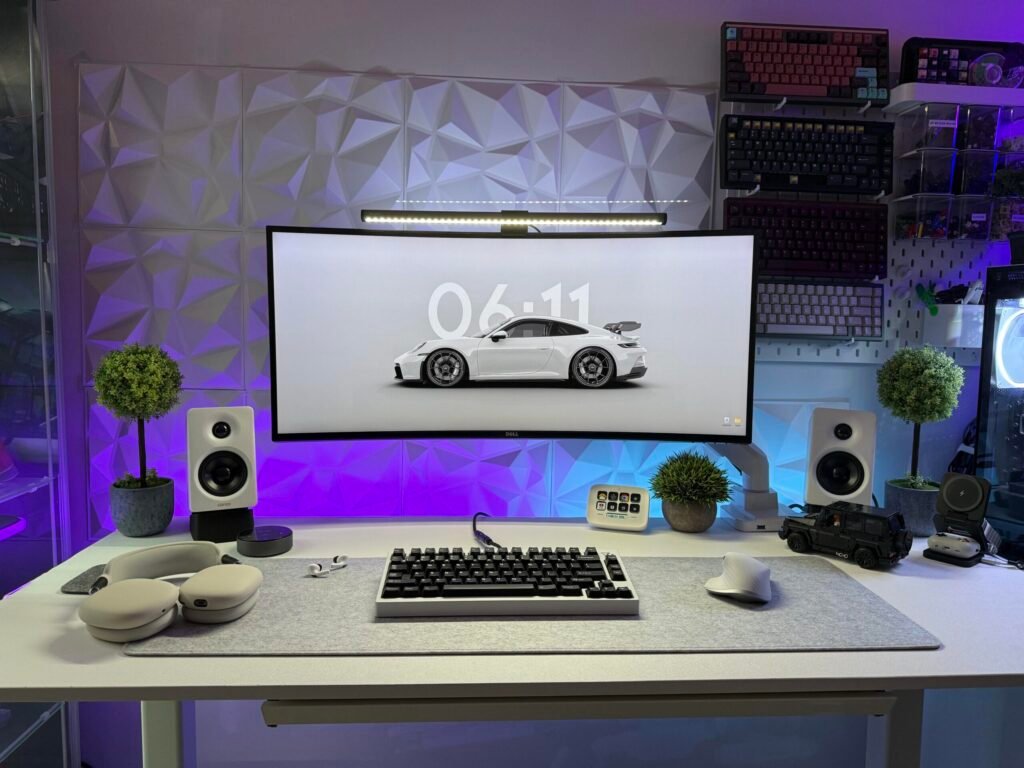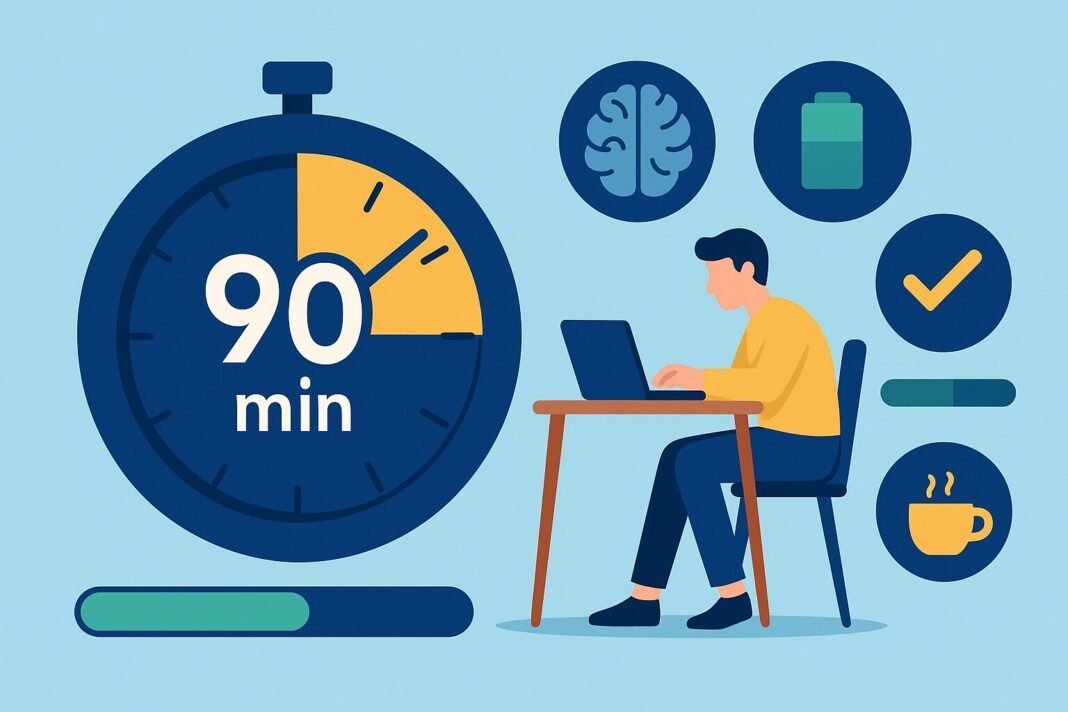
Are You Really Working… or Just Staying Busy?
Have you ever looked up from your laptop after two hours and realized… you barely got anything meaningful done?
I used to think productivity meant working longer. But it turns out, it’s not about how long you work, it’s how you manage your mental energy. That’s where the 90-minute deep work cycle came in and changed everything.
In this guide, I’ll break down how this cycle works, why it aligns with how your brain operates, and how you can use it to achieve better results in less time, with less stress.
Table of Contents
Why This Topic Matters
Most people treat focus like a faucet, expecting it to flow on command. But focus is more like a wave. It builds, peaks, and fades.
If you know when your mental clarity peaks, you can time your work accordingly and stop wasting energy fighting through mental mud.
That’s where the 90-minute deep work cycle becomes powerful. It gives structure to your day without forcing rigidity, and helps you:
- Work with your brain’s rhythm
- Stop multitasking
- Reduce burnout
- Get important work done first
Let’s break it down.
The Anatomy of the 90-Minute Deep Work Cycle
Phase 1: The Warm-Up (10–15 minutes)
This is the transition from scattered attention to sharp focus. Think of it as mental stretching.
- Review your notes
- Read something relevant to your task
- Close unnecessary tabs
- Set your intention
Tip: Do NOT open email or Slack during this time. Protect your ramp-up.
Phase 2: The Deep Work Zone (60 minutes)
This is the core. You’re focused, distractions are minimized, and your brain is in flow.
- Write, code, design, solve, or plan
- Avoid all context switching
- If needed, use a timer (e.g., 60 mins)
Pro Tip: For most people, this works best between 9:00–11:30 AM and again mid-afternoon.
Phase 3: The Cooldown (15 minutes)
Focus naturally dips here. Use this time to:
- Review what you accomplished
- Jot down key takeaways or next steps
- Take a screen break (walk, stretch, hydrate)
This taper makes it easier to transition instead of crashing.
Why 90 Minutes?
Neurologically, 90 minutes matches one full ultradian cycle, your body’s natural rhythm for alertness and recovery. Pioneering research from sleep scientist Nathaniel Kleitman shows this rhythm isn’t just for sleep, it impacts daytime performance too.
Working in sync with this cycle helps:
- Prevent cognitive fatigue
- Improve information retention
- Boost mood and stamina
It’s backed by neuroscience, not just productivity blogs.
How to Implement the 90-Minute Deep Work Cycle
Step 1: Pick a Priority Task
Choose one cognitively demanding task (writing, strategy, planning, etc.), not 10 shallow ones.
Step 2: Schedule a 90-Minute Block
Best times: Start at 9:00 AM, 1:30 PM, or 4:00 PM. Avoid booking meetings over these.
Step 3: Eliminate Distractions
- Airplane mode
- Use a website blocker (e.g., Cold Turkey, Freedom)
- Clean your workspace
Step 4: Start Your Warm-Up
- Read related notes
- Write a quick outline
- Breathe deeply for 30 seconds
Step 5: Enter Deep Work
- Start a 60-minute timer
- Keep a notepad nearby for intrusive thoughts
Step 6: Reflect and Reset
- Summarize your key outcomes
- Step away for 10–20 minutes
Do this once a day for a week and track how you feel.
When to Use This Method
- Before your most important creative work
- When you feel mentally scattered but not tired
- During mid-morning or mid-afternoon energy spikes
Avoid deep work immediately after heavy meals or during low energy windows (e.g., right after lunch).
Common Mistakes to Avoid
Working through your energy dip without recovery
Trying to cram 5 tasks into the 90-minute block
Letting email or chat apps run in the background
Skipping the cooldown phase and jumping to another meeting
Real Benefits I’ve Experienced
- Finished a daily writing habit without burning out
- Sharper decision-making in the morning
- Reduced task switching and end-of-day fatigue
- Higher-quality outcomes with fewer total hours
The structure brought me clarity. And surprisingly, freedom.
Tools That Pair Well with This Cycle
- Focusmate (for live accountability sessions)
- Brain.fm (for deep focus soundscapes)
- Notion or Evernote (for warm-up notes and reflection)
- Minimalist timer app (like Flow or Be Focused)
Final Thoughts: Rhythm Beats Routine
You don’t need to overhaul your entire calendar to get more done. You just need to build momentum blocks that match how your brain works best.
Try the 90-minute deep work cycle for 3 days. One block. One meaningful result. Then evaluate.
→ Still struggling to get started? Read next: How to Regain Focus in 5 Minutes or Less
→ Want more brain clarity ideas weekly? Subscribe to Daily Mind Boost.





